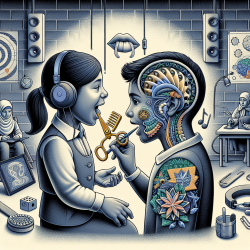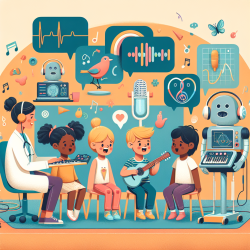Introduction
In the rapidly evolving field of speech-language pathology, leveraging cutting-edge technology is crucial for improving therapeutic outcomes. The research article "Pavement Roughness Grade Recognition Based on One-dimensional Residual Convolutional Neural Network" offers insights that can be translated into speech therapy practices. By understanding and applying the principles of neural networks and data-driven approaches, speech therapists can enhance their practice and achieve better outcomes for children.
Understanding Neural Networks
Neural networks, specifically convolutional neural networks (CNNs), have revolutionized various fields by providing accurate and efficient data processing capabilities. The research paper introduces a lightweight one-dimensional residual convolutional neural network (1D-RCNN) designed for pavement roughness recognition. This model demonstrates a high accuracy rate of 98.7% in classifying pavement roughness grades, showcasing the potential of neural networks in processing complex data efficiently.
Application in Speech Therapy
Speech-language pathologists can draw parallels between the neural network's application in pavement roughness recognition and speech therapy. Here are some ways practitioners can enhance their skills using neural network principles:
- Data-Driven Assessments: Just as the 1D-RCNN uses acceleration data to classify pavement roughness, speech therapists can utilize data-driven assessments to analyze speech patterns and identify areas needing intervention.
- Real-Time Feedback: Neural networks provide real-time data processing, which can be mirrored in speech therapy to offer immediate feedback to clients, enhancing the learning process.
- Pattern Recognition: The ability of neural networks to recognize patterns can be applied to detect speech anomalies, allowing for more targeted therapy sessions.
Encouraging Further Research
The success of the 1D-RCNN in pavement recognition highlights the importance of ongoing research and development in speech therapy. Practitioners are encouraged to explore the following areas:
- Integration of Technology: Investigate how technology, such as machine learning and neural networks, can be integrated into speech therapy tools and applications.
- Customized Therapy Plans: Develop personalized therapy plans based on data analysis, similar to how neural networks customize their learning processes.
- Collaborative Research: Engage in interdisciplinary research to explore new methods and technologies that can be adapted for speech therapy.
Conclusion
The research on neural networks in pavement roughness recognition provides valuable insights that can be adapted to speech therapy. By embracing data-driven approaches and continuous research, speech-language pathologists can enhance their practice and achieve better outcomes for children. To delve deeper into the original research, please follow this link: Pavement Roughness Grade Recognition Based on One-dimensional Residual Convolutional Neural Network.










